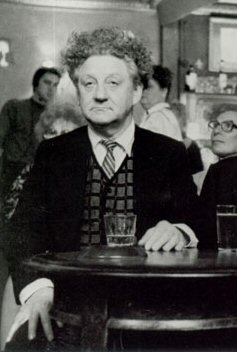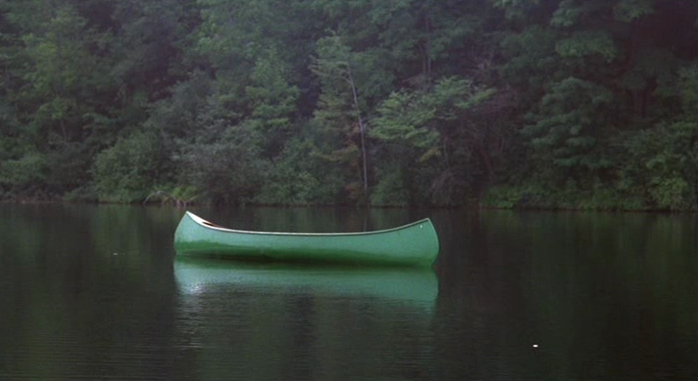Yesterday I had a persistent earworm in the form of the Skye Boat Song. “Speed, bonnie boat, like a bird on the wing…” I have to say this was a more welcome noise in my head than the usual one, which, as I explained a while ago at The Dabbler, tends to be “Happy Christmas (War Is Over)” by John Lennon and the woman Cornelius Cardew threw out of his house. With the Skye Boat Song echoing through my brain all day, I was able to recall that, when I was an infant, this tune made me well up in tears. I thought it was the most gorgeous melody I had heard in all my six or seven years.
But where did I hear it? We were not a musical family. There was an old bakelite radio in the house, with frequencies for Hilversum and Luxembourg marked (among others), but I don’t have any clear memories of listening to it. We also had a Dansette record player, on which my elder sisters span the latest waxing from the Liverpudlian moptops. Other than that, I think the music I heard most often was the hymns we sang in church every Sunday. Well, some sang, like my father, who had a tin ear but belted out the hymns with misplaced enthusiasm. I just opened and closed my mouth at what seemed like appropriate times.
I must have heard the Skye Boat Song at infant school. Whether it was a recording or was sung by one of my teachers I cannot remember. What I do remember is that it was the first piece of music I had an emotional response to. This was absolutely nothing to do with the words, all that guff about Bonnie Prince Charlie escaping to Skye after his defeat at Culloden. The travails of Scottish royals had no purchase on my heart. And the only words I remember – then as now – are the opening lines as quoted above. It was the tune that stirred me, and made me a tearful little infant.
It would have been a couple of years later that, rummaging through my sisters’ small collection of 45 rpm singles, I came upon a couple of records that I played to death. Neither of them made me weep, but I loved them nonetheless. One was “Can’t Buy Me Love” by the Liverpudlian moptops, the other “Like A Rolling Stone” by Bob Dylan. Given my lifelong obsession with words, it’s interesting that what I adored about the latter was less the lyrics tumbling out of the singer in that grating whine, but the sound of that band.
A couple more years passed, and then my elder brother began to bring LPs home. His first purchase was Abbey Road. Even at that early age, I loathed “Maxwell’s Silver Hammer”. I was not entirely convinced by “Octopus’s Garden” either. Sorry, Ringo. The rest of it I rather liked, but there was nothing there to make me weep. Now, years later, I find I can get quite emotional listening to “Golden Slumbers”, but not then. My brother’s second LP was Stand Up by Jethro Tull, featuring the hairy monopod flautist. Here I found something that almost, but not quite, prompted the tears which I was beginning to suspect I sought from music. Clearly I have deep reserves of mawkishness. The penultimate song on side two, “Reasons For Waiting”, tugged at my heartstrings. Listening to it now, I cannot imagine why. I still harbour an extraordinary affection for the early Jethro Tull albums, but if there is sobbing now it is generally prompted by laughter. As with Leonard Cohen, there is a vein of humour in Ian Anderson too readily overlooked. Thick As A Brick is one of the funniest records ever made – and deliberately so, I hasten to add.
One day when I was about fourteen I at last discovered music that brought tears to my eyes, just as the Skye Boat Song had done. This was one of the very few LPs in my father’s scant collection, a recording of Paul Tortelier and Jean Hubeau playing the Elegy and Two Sonatas by Gabriel Fauré. I played it over and over again for weeks on end, tears streaming down my face. That cello will get you every time.
But then I was beset by teenpersonhood, and I fell hopelessly in love with Henry Cow. A love that has survived, of course. But nobody ever accused Tim Hodgkinson et al of mawkishness. I was by now at grammar school, where the ungainly youths split into two musical camps. There were the spotty bespectacled wannabe intellectuals, lapping up prog, and the poptastic kids dazzled by glam. You will not need to be told which tribe I belonged to. Though I should say I had a soft spot for Roxy Music, at least in the early two-Brians period, which my sniffier pals abhorred.
A few years later and punk happened. Young Mr Key was a little slow on the uptake, it has to be said. Spitting pogoists were not my cup of tea. But the John Peel show was, and one night I recall hearing the Desperate Bicycles, and undergoing a Damascene conversion. I think I went so far as to ban records made by men with beards from my turntable. (Fortunately, there were no beards in Henry Cow. Preposterous sideburns, yes. Beards, no.) As punk became post-punk, I became ever more enamoured. Younger readers may struggle to believe that Scritti Politti were once the most brilliant group in the entire universe, as I insisted at the time. That time was lamentably brief, and ended with the release of “The ‘Sweetest Girl’” in 1981, after which everything recorded by Green (real name Paul Strohmeyer-Gartside) can be consigned to a dustbin and buried in a lead-lined vault deep below the earth’s surface.
But time passes, and we grow older, and we sift and sort and filter. And we find ourselves once more wishing to hear music that makes us weep. As David Bowie asked in “Young Americans”, “Ain’t there one damn song that can make me break down and cry?” Well, yes, there is, and in my case chief among them would appear to be the Skye Boat Song. Make of that what you will.



